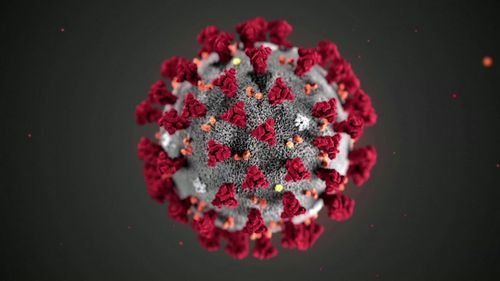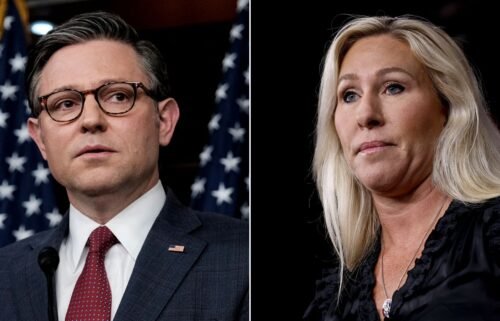What you need to know about coronavirus on Tuesday, September 1

The House Select Subcommittee on Coronavirus published eight weeks’ worth of state reports compiled by the White House Coronavirus Task Force yesterday. It makes for grim reading.
The data shows clearly that while the White House was assuring Americans that cases were on the decrease, the task force was issuing warning after warning about the rapid spread of the virus across the country. One June report showed that 10 states were in the “red zone,” with rising numbers of cases. Just three days earlier, Vice President Mike Pence had said that “all 50 states are opening up safely and responsibly.”
The more granular data in the report show how President Donald Trump has sought to spin good news and cherry-pick positive data. In an August 12 briefing, Trump said: “If you look at some of the states that had a flare up recently, they’re all doing very well. Florida is going down rapidly … Florida is going down, and Arizona is going down, way down.” It is true that Florida and Arizona had seen a decrease in new cases and test positivity that week. But both states were still experiencing significant spread and were in the “red zone” for cases and test positivity in the August 9 report. That report also recommended extra anti-virus measures in Florida.
The task force releases these reports each week to governors’ offices for their respective states, but has previously declined to make them publicly available or confirm the authenticity of any of the data reported.
It has now been six months since Covid-19 was declared a pandemic in the US and the country remains the world’s worst impacted. One in 55 Americans has been infected so far. One in 2,000 has died. According to the Centers for Disease Control and Prevention’s best estimate, the average person has less than a 1% chance of dying from coronavirus. But people 85 and older are 20 times more likely to die than people in their 50s. (That said, younger people are not immune to this disease. Over 60% of new infections in the US are now in people under the age of 50.)
We now know that underlying conditions have a huge impact on more serious cases or deaths, and that those with diabetes are three times more likely to be hospitalized. People who are obese face three to four times higher risk of death relative to those of normal weight. And the people most likely to be hospitalized with Covid-19 in the US are minorities: Black, Hispanic and Native American people.
But for everything that researchers have learned about the disease, there’s still so much more to understand. We still don’t know for sure how potential immunity works. We don’t understand why some people get very sick even if they don’t have any underlying conditions, and we are only starting to understand the long-term effects of Covid-19. Crucially, we still don’t have an effective treatment or a vaccine.
YOU ASKED. WE ANSWERED
Q: Are coronavirus and Covid-19 the same thing? How did they get their names?
A: Coronavirus and Covid-19 are not the same thing, but sometimes the terms can be used interchangeably.
This “novel coronavirus” is novel because it just emerged in humans in late 2019. There have been six other coronaviruses known to infect humans, such as SARS (circa 2003) and MERS (circa 2012).
“Coronaviruses are named for the crown-like spikes on their surface,” or coronas, the CDC says. The scientific name for this novel coronavirus is SARS-CoV-2, which stands for “severe acute respiratory syndrome coronavirus 2.”
Covid-19, however, is the disease caused by the novel coronavirus. The letters and numbers in “Covid-19” come from “Coronavirus disease 2019.”
Send your questions here. Are you a health care worker fighting Covid-19? Message us on WhatsApp about the challenges you’re facing: +1 347-322-0415.
WHAT’S IMPORTANT TODAY
Third coronavirus vaccine begins Phase 3 trials in the US
British drugmaker AstraZeneca has started Phase 3 trials of its experimental coronavirus vaccine in the US. The vaccine, developed in partnership with Oxford University, has the backing of the US federal government. Rivals Moderna and Pfizer/BioNTec already have Phase 3 trials under way, also with federal government funding.
Participants will receive two active or placebo doses, spaced four weeks apart. AstraZeneca says it intends to enroll more than 50,000 volunteers globally, including 30,000 in the US, as well as participants in Latin America, Asia, Europe and Africa.
As the race for a vaccine speeds up, some experts have urged caution, pointing to potential dangers resulting from health authorities moving too quickly in the emergency approval process. But the commissioner of the US Food and Drug Administration Dr. Stephen Hahn told CBS the agency’s decision “will not be made on any other criteria than the science and data associated with these clinical trials.” He said he would consider resignation if asked to release a coronavirus vaccine too early.
Vaccine scoreboard: According to the WHO, there are currently 33 vaccines in human trials around the world: five in US, nine in China, two each in Australia, India, Germany, Russia and the UK, then one each in Belgium, Canada, Cuba, France, Italy, Japan, Kazakhstan, South Korea and Taiwan. A further 143 are in preclinical trials.
Herd immunity is back under the spotlight
After months of effort to limit the spread of the coronavirus in the US, herd immunity has once again emerged as a controversial topic. White House Coronavirus Task Force member Dr. Scott Atlas responded to a report yesterday that claimed he is a proponent of the idea. “I’ve never advocated that strategy,” Atlas said at a news conference in Florida. While Atlas explicitly denied that he is pushing a herd immunity strategy, an administration official told CNN all of the policies Atlas has pushed for are in the vein of a herd immunity strategy.
Such an approach would mean that many people nationwide would have to get sick with the coronavirus in order to build up a natural immunity across communities. As the virus spreads and sickens people, many could die in the process.
Sweden was often held as an example of a country that took such a gamble. A pariah in Europe, Sweden implemented far fewer restrictions compared to other countries. However, it got some vindication yesterday when Dr. Mike Ryan, executive director of the World Health Organization’s Health Emergencies Program, said it was not true that Sweden has not implemented control measures. “But what it has done in the main is it tried to rely on individuals and communities to comply with the advice of government and it has tried to avoid imposing mandatory lockdowns, mandatory separation of individuals,” Ryan said.
Here’s how long it took the US to reach 6 million Covid-19 cases
The number of coronavirus cases in the US surpassed 6 million yesterday, according to data compiled by Johns Hopkins University. Only three other countries in the world have had over 1 million reported Covid-19 cases — Brazil, India and Russia.
JHU recorded the first case of coronavirus in the US on January 21. Here’s how the country got to more than 6 million:
- It took 99 days to reach 1 million cases on April 28.
- It then took 43 more days to reach 2 million cases on June 10.
- It took another 28 days to surpass 3 million cases on July 8.
- It took the US only 15 additional days to surpass 4 million cases on July 23.
- It took the US 17 days to go over 5 million cases.
- It has taken 22 days since then to reach 6 million cases.
India is reopening as caseload surges to record-breaking high
India is entering a new phase of reopening today that will see subway trains running for the first time in months, despite its infection rate showing no sign of slowing down. The country of 1.3 billion people has reported more than 75,000 infections for five consecutive days — the fastest growing caseload anywhere in the world.
Under the new rules, gatherings of up to 100 people will be permitted at sports, entertainment, cultural, religious and political events outside of hot-spot areas from September 21, with mandatory face-mask wearing and social distancing measures. Schools and colleges will remain closed until the end of September, although up to 50% of the teaching staff will be allowed to return to campus to teach online courses, and students from Year 9 to 12 can also return on a voluntary basis.
ON OUR RADAR
- Two US Open players who came into contact with a player who tested positive for coronavirus were allowed to compete on the opening day under an “enhanced protocol plan.”
- Russia has now reported more than 1 million coronavirus cases, according to data from the country’s coronavirus crisis center.
- The US Health and Human Services Department (HHS) wants to win the hearts and minds of Americans in the fight against coronavirus. Politico reported yesterday that HHS was planning to offer a $250 million contract to a communications firm to help it “defeat despair and inspire hope” about the pandemic.
- Zoom’s revenue surged more than 350% in the second quarter, and profits rocketed by nearly 10 times as much, as companies signed up for the video conferencing app to connect staff working from home during the pandemic.
- Former Google CEO Eric Schmidt blasted the “failure of leadership” in America’s coronavirus response and warned of more hardship to come unless dramatic steps are taken to crush the virus.
- A NYC artist is chronicling the pandemic by sketching people wearing masks on the subway.
- Airlines desperately need people to fly and some are dumping change fees to lure customers.
- Australia’s New South Wales is easing border restrictions with the neighboring state of Victoria “to help residents and local businesses operate,” as Victoria’s cases have dropped.
- A survey of nearly 20,000 people across 27 countries found that 74% of people said they are willing to get a coronavirus vaccine. China had the highest support for vaccination: 97% of those surveyed saying they would get immunized. Russians showed the least interest, with just 54% saying they would. In the US, 67% of people said they’d get the jab.
TOP TIPS
How to protect yourself from Covid-19 while casting your ballot
Is it safe to vote in person on election day 2020? Or should you choose early voting or a mail-in ballot?
Experts say the answer depends on a variety of factors unique to you — your personal risk, the degree of Covid-19 transmission in your local area and your willingness to plan and execute personal safety precautions while casting your vote. Here is a step-by-step guide to voting safely.
TODAY’S PODCAST
“As much as everyone just wants it to be as normal as possible and as enjoyable as possible, safety has to come first. Because if we don’t do that right now, we might never be able to go back to normal.” — Bella Smith, Tulane University freshman
What’s it like going to college during a pandemic? CNN Senior Global Affairs Analyst Bianna Golodryga talks to a Tulane University freshman Bella Smith about life on campus. Listen Now.


